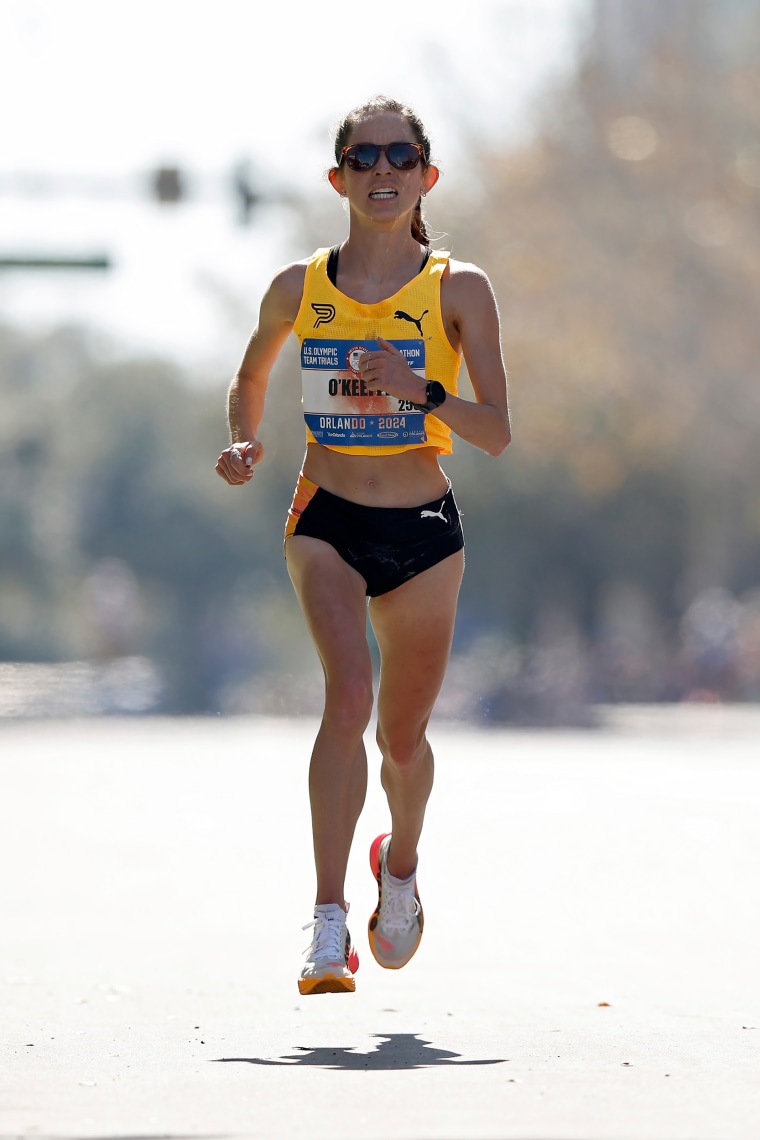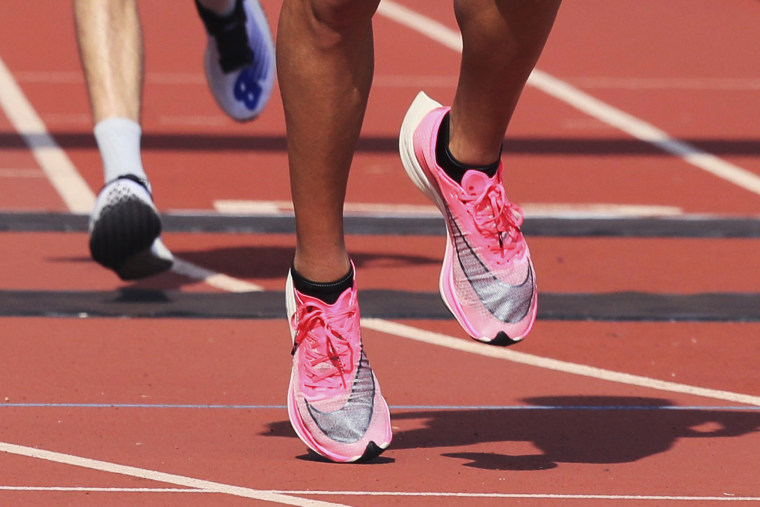-
 Find in Members
Find in Members Find in Projects
Find in Projects Find in Channels
Find in Channels
At the 2016 Summer Olympics in Rio, the first three men to cross the marathon finish line each flashed the same neon green shoe, emblazoned with an ever-familiar swoosh.
On their feet was the world’s first “supershoe,” a prototype of the Nike Zoom Vaporfly that would go on to revolutionize the sport of running and stir years of controversy as runners used it to shatter records. Competitors would copy it, and running’s governing body would ultimately put in place new rules that remain in effect for this year’s Paris Olympics.
The Vaporfly’s thick foam cushion was the key, completely defying the norms of the time. Previously, running shoes were “flats” designed with a less-is-more approach.
“You would have been laughed off the stage if you said a thick shoe was fast in 2015,” said Elliott Heath, product manager of Nike Running footwear.
This year’s marathon is set for Saturday and Sunday, and Heath expects many of its runners to wear Nike’s most up-to-date and rule-abiding model of the supershoe, the Alphafly 3. It retails for $285, generally drawing raves from the die-hard running community that dissects each shoe on release.
And there are plenty of others after Nike ushered in a technological arms race. Carbon-plated supershoes from various brands are now worn by your average runners chasing personal records at major marathons around the world.
Fiona O’Keeffe, who will run the women’s marathon for Team USA on Sunday, is sponsored by Puma and wears one of its supershoe varieties. She said she could still remember the first time she tried on a supershoe.

“The feeling was bouncy, which was just totally different,” O’Keeffe said. “My legs would feel better later into a workout and I’d just recover off of things better. All that really adds up once you’re doing longer-distance stuff especially.”
Innovation in sports equipment has resulted in a number of challenges for those who oversee athletic competitions, including in the Olympics. There were 2008’s NASA-assisted LZR swimsuits that have since been banned. The Brits have taken heat for specialized bodysuits that some said gave their cyclists and skeleton athletes an advantage. And there are plenty of other athletes who have sought to gain a slight edge, surreptitious or otherwise, through their own ingenuity.
These innovations have posed a difficult question: Is technology clouding our ability to recognize significant human achievement? Is a new record really a record if it’s aided by a springier shoe or a lighter shirt?
Since the Vaporfly’s debut in 2016, runners have shattered world records, including achieving a sub-two-hour marathon. All wore various iterations of the supershoe.

In December 2019, The New York Times found that runners wearing Vaporflys ran 4%-5% faster than those wearing an average shoe. In a marathon, that’s a difference of several minutes.
World Athletics eventually set new rules in 2020 ahead of the Tokyo Olympics. It set a maximum sole thickness for each athletic event, ranging from 20 millimeters for field events to 40 millimeters for road events. All prototypes not available to the public, such as the Vaporflys in Rio, were banned from competition.
World Athletics said it had “concerns that the integrity of the sport might be threatened by the recent developments in shoe technology.”
It then cemented these rules when the winner of 2021’s Vienna City Marathon was disqualified after his shoes were found to be 1 centimeter too thick.
So what makes supershoes so good that competitions are regulating them? Heath said it comes down to two components: cushioning and propulsion.
“The foam was there to provide cushioning not only to store and return energy but also to protect the runner’s legs,” Heath explained. “When you had racing flats, you basically asked the runner to take all of the impact.”
The propulsion, meanwhile, is created by a full-length, curved carbon-fiber plate.
“Plates had been in shoes for a long time. But what was new was the shape of the Vaporfly plate,” Heath continued. “That curvature is specifically designed to give stiffness to the runner where they need it ... to help them propel off to the next stride.”
The goal, Heath said, was to create the most lightweight foam and plate, while amplifying the amount of energy stored and returned.
Tailor-made shoes for individual athletes are not allowed because they must be made available to other athletes, though the hefty price tags on many supershoes don’t necessarily make them accessible. The Adidas Adios Pro Evo, worn by Tigst Assefa during her world record-setting 2023 Berlin Marathon, retail for $500. “Development shoes,” or prototypes being tested before retail, can be worn in competitions except for the World Championships and the Olympics.
The current regulations set by World Athletics, updated since Tokyo, require shoe manufacturers to submit shoes ahead of time for approval. A shoe checker on the World Athletics website allows you to check whether a particular shoe is allowed for specific events.
Meanwhile, different rules govern spiked shoes for track events, since the technology caters to different needs. Sprinters, for example, require more stability and containment as they run, Heath said.
But while supershoes have transformed the landscape of professional running, the sport requires much more than a sturdy pair of running shoes. Especially if you’re running more than 26 miles.
For O’Keeffe, the mental component is most important.
“You can train your body as hard as you want,” she said, “but if you show up on race day and you’re not excited to compete, it doesn’t matter how fit you are.”